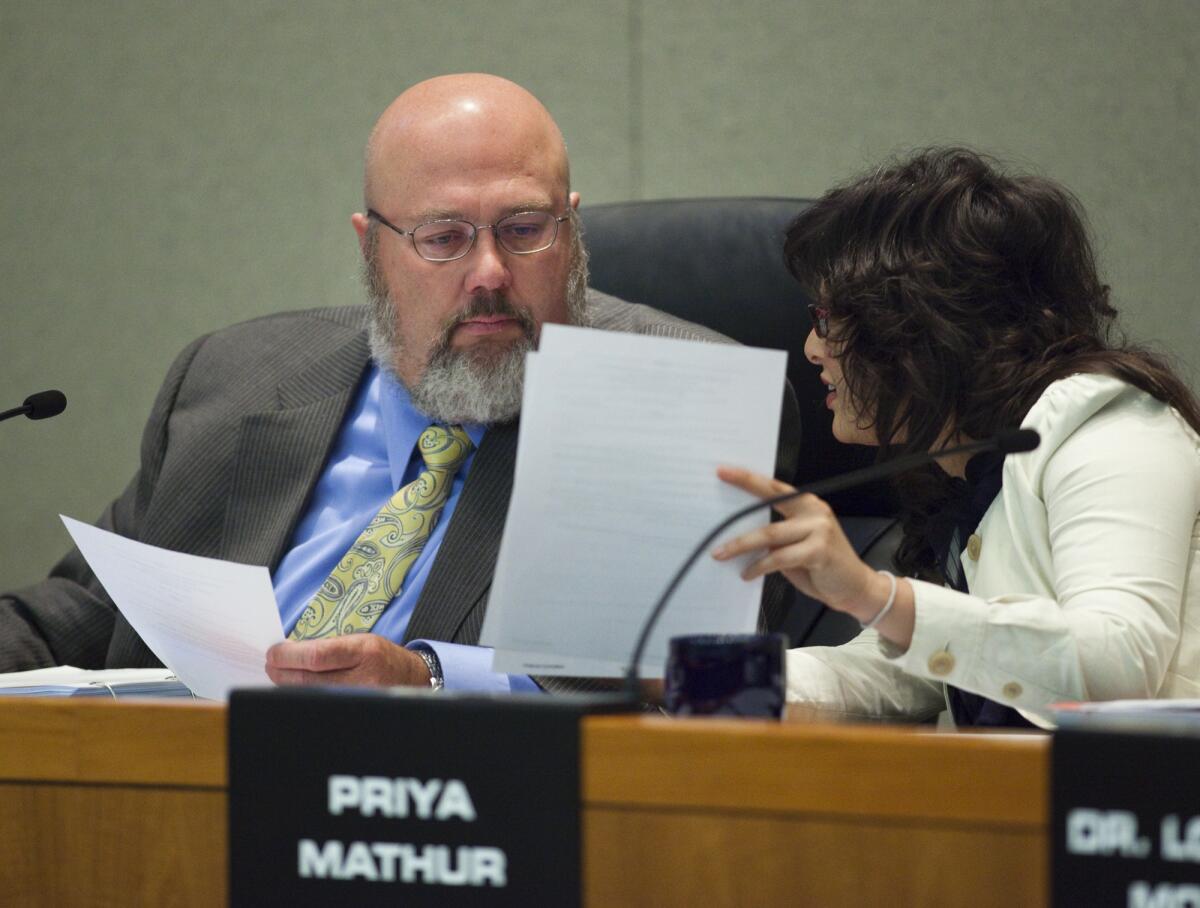Column: Political Road Map: The long, cold winter for California’s pension funds is coming

For those who believe that California is in danger of breaking its promise of retirement cash for local and state government workers, this week marks another important milestone in taking stock of the effort to change course.
On Tuesday, directors of the nation’s largest pension fund, CalPERS, will consider the pros and cons of asking taxpayers next year to chip in more to cover those retirement promises — the second such discussion in just the last month.
Set aside the politics and pension math is pretty simple. There are only three sources for the cash that hundreds of thousands of government workers are expecting during their golden years: worker contributions, government contributions and investment profits from Wall Street.
The CalPERS investments — in all, about $299.7 billion — aren’t pulling their expected weight. Actual investment profits continue to lag the official benchmark, which was slightly reduced in 2012. Those who oppose ratcheting down that benchmark rate even further argue that long-term trends are still better than recent history and that even a handful of economic boom times can fill expected shortfalls.
But the math is now daunting. Every year that real investment profits come in lower than expected, future years must make up the difference or the funding gap widens. Similar problems have erupted at CalSTRS, the state’s pension fund for teachers, even after state lawmakers threw out a rescue buoy in 2014.
Political Road Map: Hundreds of extra bills could be coming to the Legislature in 2017 »
In other words, the status quo both delays and worsens the day of reckoning.
“Part of this discussion reminds me of the climate change discussion, because it’s a slow trend,” said CalPERS board member Bill Slaton at a Nov. 15 hearing. “Sometimes you can’t feel it.”
Which brings us to Tuesday’s discussion, and possible action by CalPERS as soon as February to lower the official assumption of investment profits. A faction of board members believes that the pension fund will need to start collecting more money from local and state governments as well as the employees themselves.
Part of this discussion reminds me of the climate change discussion, because it’s a slow trend.
— Bill Slaton, a CalPERS board member, on the pension fund’s projected path toward a fiscal crisis
On the other side, governing board members who represent public employee unions want to wait a bit longer. “I think that we need to step back and breathe,” CalPERS board member Theresa Taylor said during last month’s hearing.
This year’s state budget assumes $7.2 billion in pension payments, almost 64% more than just nine years ago. Gov. Jerry Brown, who led a notable but limited effort in 2011 to shrink the long-term costs, has quietly pushed the pension fund’s leaders to effectively send him a larger invoice, convinced that the state’s bitter pill is better swallowed now than later.
That’s not a popular prescription with some local and state government workers, who would see more of their paychecks earmarked for pension contributions if CalPERS lowers its investment expectations. Nor will it be easy for some cities and counties struggling with existing pension payments.
Still, those are the rules, absent a major ruling by the California Supreme Court next year to rewrite the law on pension promises. In the winter months of 2017, the focus is likely to be back on pension arithmetic. And the question will be whether the world of politics — long known to favor the “art of the possible” — sees the tough math of pensions as too fraught with electoral danger, and thus sets aside the hard choices for another day.
Follow @johnmyers on Twitter, sign up for our daily Essential Politics newsletter and listen to the weekly California Politics Podcast
ALSO
The story of how one governor’s bid to control California pensions backfired
How California’s pension gap became so deep
Updates on California politics
More to Read
Get the L.A. Times Politics newsletter
Deeply reported insights into legislation, politics and policy from Sacramento, Washington and beyond. In your inbox three times per week.
You may occasionally receive promotional content from the Los Angeles Times.











